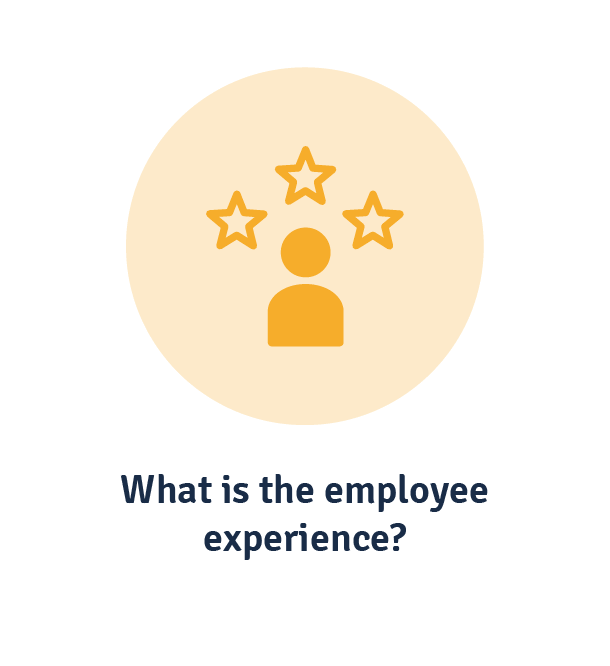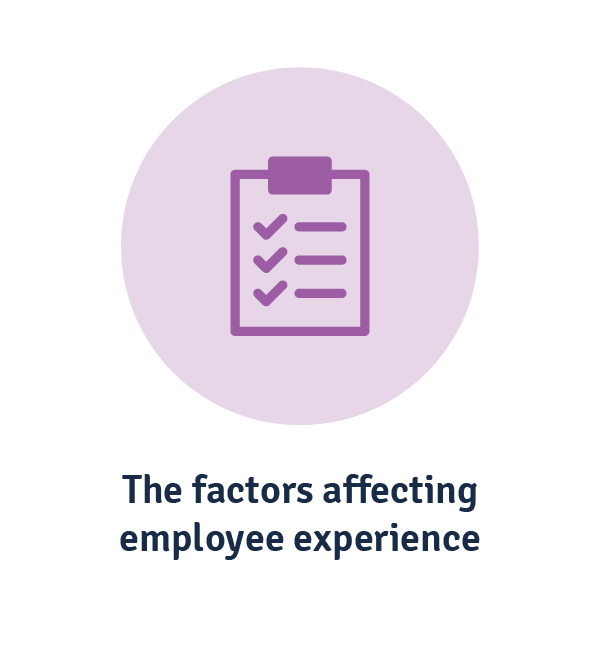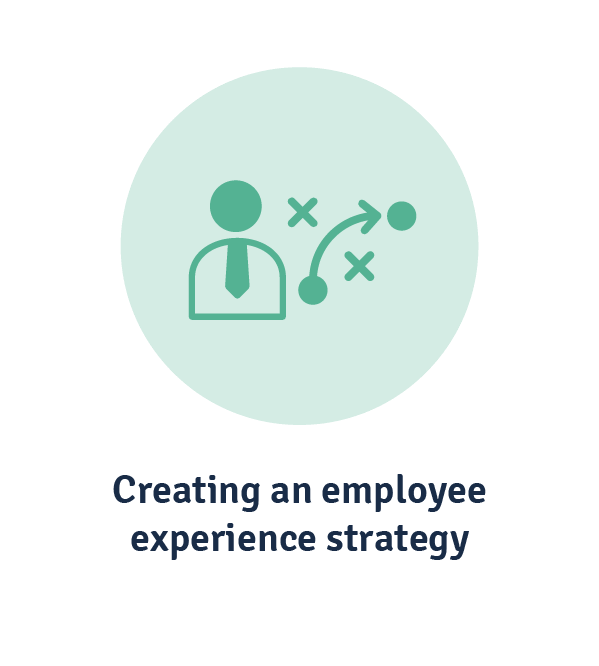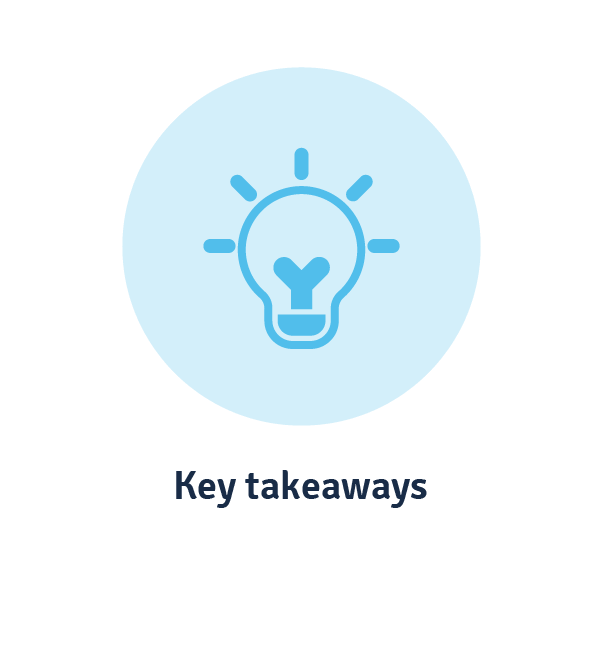Turnover is higher than ever, and yet we’re facing a talent scarcity. A new workforce is emerging, and they’re not afraid to leave a negative employee experience behind them.
Ergo, you need to be reevaluating your employee value propositions and the journey you offer your workforce, now and into the future.
Here, we’ll walk you through what exactly the employee experience is, why it’s important enough for you to be reading this article, and give you some tips to optimise your organisation’s employee experience.
What is the employee experience?
Employee experience (EX) refers to the interactions individuals have with their work environment and perceptions they have of their employer. That includes their relationship with their manager, the physical or virtual workspace, policies, processes, benefits, pay, team dynamics, role responsibilities, and culture.
How the employee experience impacts business performance
We know by now that the foundation of a high-performing organisation is a well-executed capability engine. What powers that engine? Your people.
If they’re not capable, they’re not going to be able to perform at a technical level. But if they’re not engaged, they’re not going to perform at all, regardless of capability.
And between the Great Resignation, quiet quitting and side hustle culture, there’s plenty of anecdotal evidence to show employee experience hasn’t kept pace with changing views of what makes for a desirable job and employer. It’s not just about the perks; all the individual moments in an employee’s experience influence how they feel about your organisation.
And those feelings have power. The employee experience directly affects employee retention, engagement, performance and, yes, your bottom line. Consider that:
- A poor social climate signals to employees they are not valued. That manifests in a lack of trust, dysfunctional teams and, ultimately, high turnover.
- Lack of professional development opportunities and unclear performance expectations stagnate career growth.
- Employees don’t feel connected with your organisation’s mission or values.
That means constant disruptions to the maturity and availability of key capabilities, which means slow time to productivity, market and revenue. Stagnant employee development also means that you’re not going to strengthen the capabilities you do hold onto, which brings competitive advantage to a standstill, too.

On the other hand, organisations that invest in the long-term employee experience:
- Make, on average, four times the profit and two times the revenue of their competitors. That’s while often being 25% smaller—signalling higher levels of productivity and innovation.
- Encounter 81% lower absenteeism and anywhere from 18% to 43% decreased turnover.
- Are more likely to recover from economic downturns, with a stronger workforce to show for it, too.
The factors affecting employee experience
Delivering an attractive and engaging employee experience is the key to differentiating yourself as an employer in this day and age. Yet, it can be easy to get it wrong.
The barriers to a positive employee experience may also be more systemic than you think.
- Micromanagement or absent managers. It takes 22 months for stress levels to regulate after working with a bad boss. Poor working relationships cost $360 million globally in lost productivity, while we’re on the shocking statistics.
- Toxic culture. Research shows that dysfunction is the leading driver behind post-pandemic mass employee exodus. Attrition rises the longer toxicity festers, and turnover increases with both.
- Poor role clarity. Unclear reporting lines, scope creep in responsibilities and siloed teams all decrease satisfaction in the workplace.
- Lack of learning opportunities. You can’t hire your way to growth. Fewer workers and more high-demand skills means employees hold the power in the talent market.
- Lack of employee voice. For one timely example: 70% of employees expect their employer to support working from home, having shown for the last three years they are productive at home. Yet, many a large corporation has mandated returning to the office.
In short: What incentive do employees have to stay with you, when other organisations will listen to and meet their expectations, you know?
Creating an employee experience strategy
Ever introduced a new employee experience initiative, experienced a promising rise in employee engagement metrics, and then found things start to drop off again, sparking the need for a new initiative?
Many short-term employee experience strategies amount to an adrenaline shot: Designed for instantaneous effects, but no staying power.
So, an employee experience strategy needs to things to be successful.
- A long-term outlook that covers both the employee perspective and business needs.
- An understanding of employee satisfaction in order to identify triggers and drivers.

Step 1: Establish a baseline
As with most things in business, EX starts with your business leaders. You need them to articulate the direction for employee experience in line with business strategy, so you can determine its value at scale and within teams.
Side note: Creating a mission for the employee experience means that it’s much more likely to be consistent through the employee lifecycle, especially as more and more stakeholders own parts of it (more on this in a few paragraphs). If we borrow from Gallup’s Employee Experience Framework, it’s also important for employees to connect with your organisation’s mission rather than just be able to recite it. Employees who share a purpose with their employer are more likely to understand their contribution to it, and therefore engage positively with it.
If the first part of establishing a baseline is scene-setting, the second is marker key players. Gathering data enables you to measure employee engagement as it stands, so you can better design solutions to improve or maximise it.
Look to:
- Exit interviews to understand what went wrong for departing employees (if they’re not BAU, introduce them into offboarding processes).
- Company review sites to understand what prospective employees are reading about your employer brand.
- Surveys for existing employees at key moments—say, the end of a development plan or after onboarding—gives you insight into the strengths and weaknesses of current practices you’re offering.
This may be one of the few times that you want subjective data in business metrics—the only way to propel employee experience management is with information straight from the source.
Step 2: Map the employee journey
Those key moments we just mentioned? Those are the low-hanging fruit for making an employee experience strategy sticky in the short term, so you can continue to collect data for improving it in the long term.
The moments that matter look different for each department and role. In the long-term, you’ll want to look at creating archetypal employee personas broken down by role (e.g. middle managers, new grads and executives), function (operations, sales, IT, etc.), personality and lifestyle.
But to make this more easily scalable right now, we recommend mapping the general milestones in the employee journey, from the hiring process through to offboarding, to understand where the emotional rubber hits the road.

Recruitment
Effective role design should link any given role to business strategy, through capabilities. If not already done, we recommend going back to your capability framework and matching individual job responsibilities to the relevant capability.
It gives your hiring managers an objective and definitive way to ensure they’re recruiting the right person for a job, as well as making it clearer for candidates what capabilities they need to be successful.
Onboarding
Onboarding is the key point in time to set expectations. A great onboarding experience can increase new hire retention by up to 82%, while a bad process can stretch time to proficiency (and therefore productivity) out to eight months or more.
Ways to mitigate and manage onboarding at scale include:
- Digital onboarding pathways, such as in an LMS
- Centralised information packs, welcome letters and organisation/team charts
- Pre-made development plans, with content and training mapped to their probation or onboarding period.
Employee recognition
We’ll borrow from Google, who use emails to provide short, sharp tips for managers to use with their teams. The point is to be prescriptive about ongoing performance management, but give managers space to implement the advice in the flow of work and one-on-ones. Other mini celebrations can be work anniversaries, project completions and even birthdays.
Work/life balance
A simple approach here is to offer more flexible working hours or arrangements. Many organisations use 7am – 7pm bookends, with core hours (e.g. 10am – 3pm) when employees still need to be available for team and client meetings.
Time off and work from home policies also make a world of difference. One in four employees say their productivity is higher when working from home, and without the limitations of location, your organisation has greater opportunity to create more diverse teams.
Development & job transitions
AI is beginning to change the job landscape, while skills are expiring faster than ever before. Add to that the prevalence of Generation Z and millennials in the workforce—and their desire to learn and be rewarded for it—and you literally have no excuse to not offer personalised training and development anymore.
You see, employees’ top motivation to learn is career growth. It’s not enough to put generic L&D content in front of them; creating capability academies or talent marketplaces offers the benefits of developing capabilities key to business success, creating a living skills database, and giving employees view and control of their growth in your organisation.
Step 3: Create metrics to measure impact
A big part of making this sustainable is to have metrics in place that frequently and continually measure employee sentiment. That’s why we offered some methods to create a baseline at the start of your strategy; in future, those are how you create benchmarks to show improvements.
Be sure to create metrics that cover as many elements of the employee experience as possible, such as:
- Training and development
- Onboarding and offboarding
- Culture and relationships
- Tools, processes and resources.
The first can be evaluated through many of the L&D metrics you likely already have in place, such as learning engagement, impact of training, and training feedback. As a reminder, surveys and exit interviews work for onboarding and offboarding respectively.
When it comes to company culture, recognise where gaps or missed opportunities to collect employee feedback may emerge. Some people may not be honest in one-on-ones, which is where anonymous feedback and survey tools can be useful. Use questions and statements like:
- My work is fulfilling.
- When you talk about the organisation you work for, how do you feel?
- I feel supported by my direct manager.
- Are you happy with your growth and development?
- What are your main sources of stress at work?
HR KPIs like promotion rates and voluntary and involuntary turnover should be used to add the objective side to this analysis, and show tangible business impacts over time. (You still have to justify methods used, after all.)
And as for understanding the success of the tools, processes and resources on offer, you can use some combination of all of the above alongside uptake rates for specific tools like your LMS.
Key takeaways
While employee engagement refers to the level of connection employees feel with their organisation, employee experience covers the landscape behind it.
And employee sentiment is not something to sniff at, nor is it incredibly hard to create positive experiences. The first step is to listen to your employees. Ask them how they feel about their role, team, manager, environment, workload, opportunities and purpose, and you’ll already have won brownie points and collected valuable data to build an employee experience strategy.
The easiest path forward is mapping solutions to key milestones on the employee journey. Systematically optimising recruitment, onboarding and offboarding while personalising development puts you on the road to a healthier culture, increased retention and a highly skilled, engaged and productive workforce.
Related Reads on This Topic

Surveys Are Your Secret Weapon in Employee Satisfaction
Feedback is integral to effective employee development and satisfaction in the workplace.

Engaging the Multigenerational Workforce
Discover how to manage the different priorities and work styles of Gen Z, Millennials, Gen X and Baby Boomers.

The Power of an LMS in the Onboarding Journey
Automated, universally accessible and measurable – that’s onboarding with an LMS.




